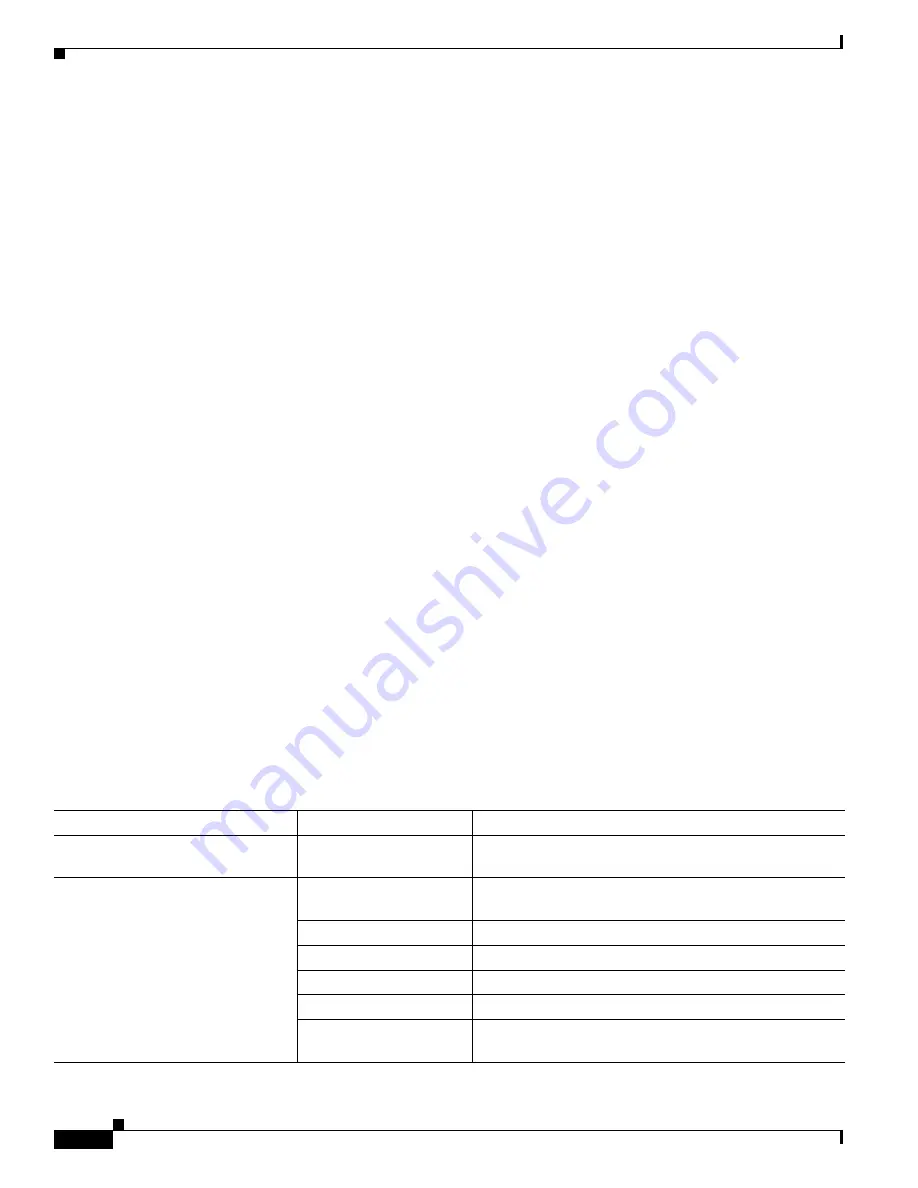
2-6
Catalyst 3550 Multilayer Switch Software Configuration Guide
78-11194-03
Chapter 2 Using the Command-Line Interface
Using Editing Features
To disable the feature during the current terminal session, enter the terminal no history privileged
EXEC command.
To disable command history for the line, enter the no history line configuration command.
Using Editing Features
This section describes the editing features that can help you manipulate the command line. It contains
these sections:
•
Enabling and Disabling Editing Features, page 2-6
•
Editing Commands through Keystrokes, page 2-6
•
Editing Command Lines that Wrap, page 2-8
Enabling and Disabling Editing Features
Although enhanced editing mode is automatically enabled, you can disable it.
To re-enable the enhanced editing mode for the current terminal session, enter this command in
privileged EXEC mode:
Switch# terminal editing
To reconfigure a specific line to have enhanced editing mode, enter this command in line configuration
mode:
Switch(config-line)# editing
To globally disable enhanced editing mode, enter this command in line configuration mode:
Switch(config-line)# no editing
Editing Commands through Keystrokes
Table 2-5
shows the keystrokes that you need to edit command lines.
Table 2-5
Editing Commands through Keystrokes
Capability
Keystroke
1
Purpose
Move around the command line to
make changes or corrections.
Press Ctrl-B, or press the
left arrow key.
Move the cursor back one character.
Press Ctrl-F, or press the
right arrow key.
Move the cursor forward one character.
Press Ctrl-A.
Move the cursor to the beginning of the command line.
Press Ctrl-E.
Move the cursor to the end of the command line.
Press Esc B.
Move the cursor back one word.
Press Esc F.
Move the cursor forward one word.
Press Ctrl-T.
Transpose the character to the left of the cursor with the
character located at the cursor.
















































